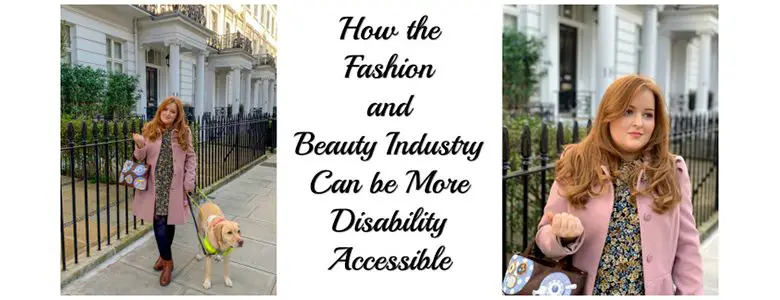
How fashion and beauty brands can be more accessible
We all know that fashion and beauty aren’t the most accessible industries in the world. How often do you see disabled models? Or websites and stores that are totally accessible? Beauty blogger Emily Davidson shares a post from her blog, Fashioneyesta, on the simple changes that retailers could make to be fully accessible to disabled and visually impaired people.
 So, I’m a disabled person, I have a visual impairment and I work with a guide dog. But I’m also a fashion and beauty blogger. I’ve worked with a lot of brands and have a lot of experience in the industry.
So, I’m a disabled person, I have a visual impairment and I work with a guide dog. But I’m also a fashion and beauty blogger. I’ve worked with a lot of brands and have a lot of experience in the industry.
Even though it is getting better in terms of disability inclusion with regards to working with disabled influencers and accessibility, there is still work to do done.
Before writing this post about what needs to happen next, I asked my disabled followers Twitter to share their thoughts. I got an overwhelming response and their answers have really helped me to shape this post.
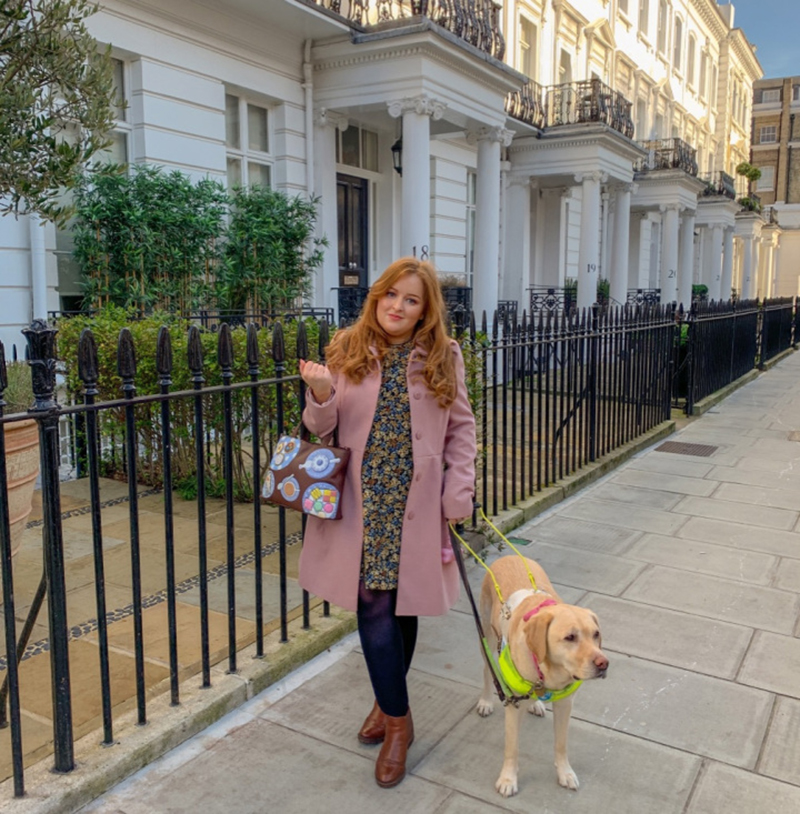
A photo of Emily and guide dog Unity standing in a London street
1. Website and app accessibility
Let’s start with website and app accessibility, an area that is vital for many disabled people who find it difficult to physically get out to shop. In a Twitter poll, I asked my followers whether they were more likely to shop online or in store. 80% voted online and 20% in store.
As a visually impaired person who requires the use of assistive technology, such as screen reading devices, some online websites and apps can be very difficult to negotiate.
Poor colour contrast, text that is too small and videos that load the minute you visit a website are all problematic. This is especially true if there is no way to customise a website’s accessibility to suit your needs.
Many of the people I asked felt that beauty and fashion websites don’t provide detailed enough descriptions of clothes’ size, patterns and colour.
But there is certainly more companies could do to improve. Here are some key pointers for website developers when it comes to accessibility…
- Keep it clean. Make sure the website or app has a clear and easy layout and that all the buttons and toggles are easy to find.
- Make it easy to navigate. Don’t make the first thing they see a video or flash pop-up. They make life incredibly difficult for screen reader users.
- Make sure it has a clear colour contrast. If the background is white make the text dark and vice versa.
- Ensure that it is coded to be compatible with screen readers and other access features. Do this by labelling buttons, making it possible to zoom in, ensuring images have alternative text and limiting pop-ups.
- Make sure you provide detailed descriptions of items, such as colour, pattern, style, care instructions and size for clothes. With beauty products, ensure there is detailed information on the colour, shade range and ingredients.
- If you include videos, ensure that they provide transcripts or closed captions. If you cannot add them to the video directly, use a platform like YouTube where you can upload them.
- Photograph the models sitting down as well as standing up so that wheelchair users can see how the clothes look in this position. Or, better yet, employ wheelchair users as models.
- Think about having your own accessibility toggle with options to invert colours, greyscale and text size.
If a disabled customer or service user contacts you about your website’s accessibility features, please acknowledge it and take their feedback on board. All too often I hear stories of companies that simply respond with, “we’ll look into it,” and do nothing to improve there website.
I have even heard of an instance where someone was blocked by a company when they tried to give constructive feedback. This is incredibly narrow-minded because the disability community is huge, making up 15% of the world’s population. It’s both moral and sensible to ensure that we are catered for.
2. Social media accessibility
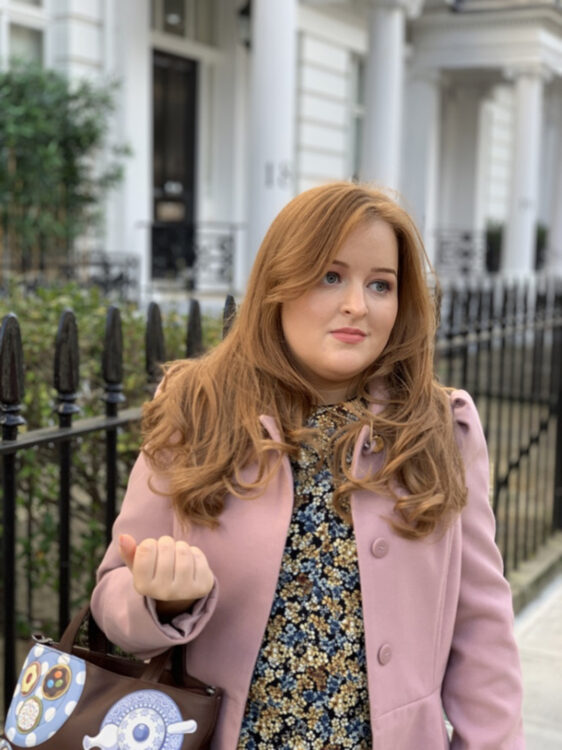
Now, let’s talk about social media. Luckily with social media, a lot of websites, including Twitter and Instagram, are doing things to make their websites more accessible. All companies need to do is follow a few simple guidelines when they’re using these platforms to make sure it’s accessible to their disabled following.
If you want to read a very compressive blog post on websites, social media and accessibility, check out this blog post by My Blurred World.
Picture descriptions
One of the best things you can do for those with visual impairments is to add a description of the photo.
With Twitter and Instagram, there is a specific option to add picture descriptions to an image. You just need to ensure it is activated and that you add a brief description of what the image is showing before you share it.
With other websites, such as Facebook and Google, just start the picture description with the words ‘photo description’ or something of that nature.
Closed captions
If you use YouTube or upload a video to social media, add closed captions or a transcript so that those with hearing loss or difficulty understanding English can watch the video.
Capitalise hashtags
If you tweet under a certain hashtag, be sure that you capitalise the first letter of each word. For example, instead of writing the hashtag #disabledaccessday, write it as #DisabledAccessDay. This is because screen readers do not pronounce a hashtag correctly when there are no capital letters to differentiate between each new word.
Other points
- Don’t use too many GIFs as they are not accessible to screen readers.
- Add audio descriptions to videos where there is no audio feedback.
- Be conscious of disabled customer’s needs if they reach out to you via social media.
- Be sure to give descriptions to clothes, makeup looks and any products you are promoting online.
Design and packaging accessibility
When I asked a question about this on Twitter, a lot of people had a lot to say about it. So, I’m going to split this into two sections on fashion and beauty.
First and foremost, if you want to make your products more accessible, the most important thing you can do as a brand is to ask disabled customers. If you are unsure, run focus groups, ask advice from disability bloggers and run surveys and polls. You will get valuable feedback to help you develop your products and make them more accessible.
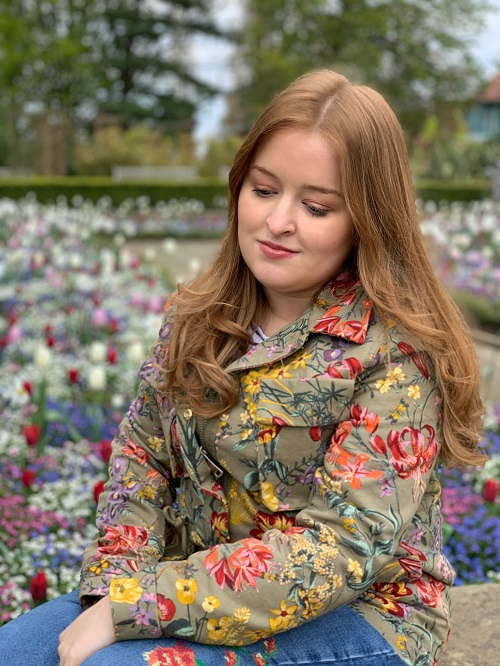
Beauty
Distinctive packaging
With beauty products, a lot of bottles are indistinctive. This can make negotiating through they very difficult if you have a visual impairment. Products should be different sizes, shapes and colours.
Braille labels
Think about adding braille to your products. Currently, the only beauty brand using braille is L’Occitane. It is such an important feature. You could even think about offering the option online so that people can request a braille label if it is needed.
Print size
Printed words are often tiny and really difficult to see on packaging. I get it, sometimes it’s not physically possible to make print any bigger if its a small item. But just try and make it as clear and big as possible.
Colour contrast
Make sure your items have good colour contrast and distinctive colours to make them easier to see.
Easy grip
Make your products easy to open, and things such as eye pencils and liners ergonomic so that they are easier to grip.
QR codes
Add QR codes to items so that people can scan them and be directed to a webpage where they can find out further information on it.
Durability
Make your products durable and sturdy so that they will break less easily if they are dropped.
Palettes
Make palettes easy to open for those with dexterity issues. Make each colour separate in its own pan so that people with visual impairments can distinguish between them.
Fashion
Universal sizing
One thing that drastically needs to change is sizing. It needs to become universal. A size 10 should be the same across all clothing companies and fit according to a standard sizing guide.
Comfortable clothing and shoes
Clothing should be both aesthetically pleasing and comfortable. Shoes should be easy to slip on and jeans and skirts should be easy to pull up. Adding a small platform or a strap to a shoe can really help to make heeled shoes so much more sturdy and secure.
Buttons and zips
Clothes would be less fiddly if they had fewer buttons and zips, making then easier for someone with mobility issues to dress.
Different postures
When designers make garments, they should think about how they will look when someone has a different posture or is in a different position, such as sitting down.
Adapted clothing
Think about adding adapted clothing to your ranges for people with different disabilities that may require equipment, such as feeding tubes, or for those with prosthetic limbs or who are amputees.
Label sizing
Make labels easy to read and care instructions clear for those with limited eyesight.
Fabrics
Make clothing in breathable, comfortable fabrics, such as cotton, linen and terrycloth. Certain disabilities can cause physical pain, skin irritation and inflammation, so comfort with clothing is absolutely key.
Garment care
Make garments in fabrics that are easy to wash and that don’t require a lot of maintenance. Having to wash clothes when you have a disability can be enough of a chore, so the easier they are to maintain the better.
4. Store accessibility
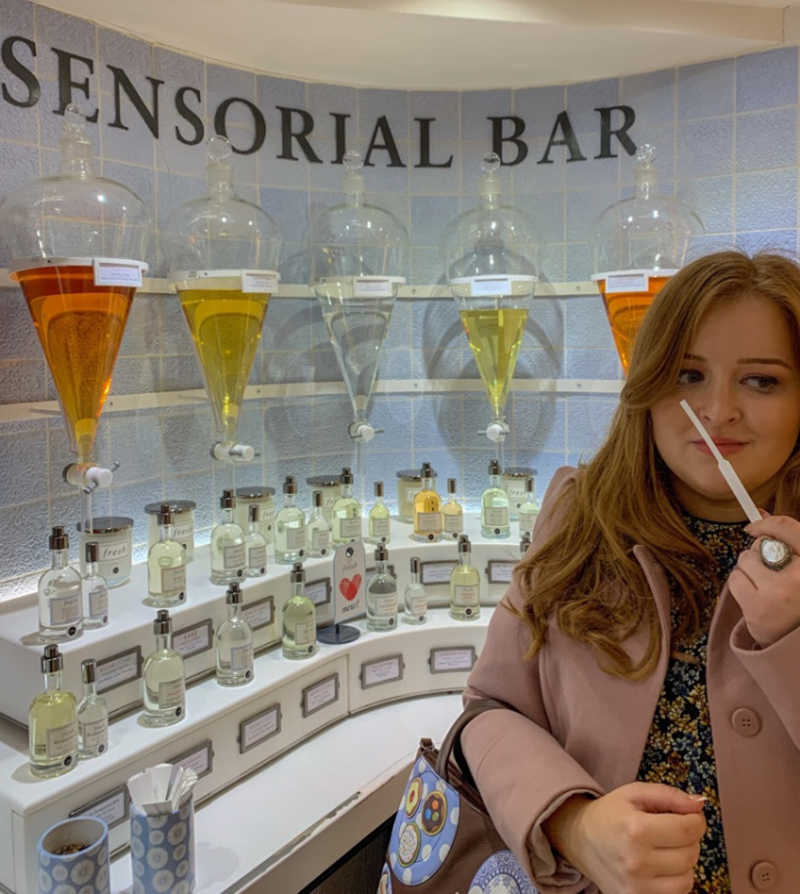
One of the big reasons why disabled people prefer to shop online is because stores are simply not accessible enough. I’ve been to many stores that have been cramped or difficult to get around because of huge boxes in the way. I’ve also almost been bashed in the head by clothing rails.
I work in retail myself within a beauty company, so I know how hard visual merchandising and layout can be, especially if it’s busy or you haven’t got a lot of space to work with. I get it. But, it’s important to try and ensure that stores are accessible as possible for disabled customers.
- Layout: Layout should be spacious and easy to navigate. People with wheelchairs, assistance dogs, mobility aids and prams need space to be able to move through a store. Don’t leave boxes or other stocking equipment lying around where it can get in people’s way.
- Display: When displaying items, make sure everything is neat and tidy and in its place. Have a system for organising things and stick to it. Try not to move things around and drastically change a layout if it’s become familiar. Don’t cram clothes in, making it hard to see what is what. Try and keep on top of organising by sizing items.
- Ramps: Make sure your store has ramp access.
- Lifts: If your store has a downstairs, include a lift and make sure it is always in working order.
- Lighting: Have good lighting and make sure it isn’t too harsh or dingy for those with sensory and cognitive disabilities.
- Accessible changing rooms: Changing rooms can be made accessible by having a larger space, lower hooks and hoists.
- Disabled toilets: If you have a toilet, add an accessible one with enough space and equipment.
- Doors: If you have manual doors, is there someone on hand to open them? Alternatively, automatic doors are great for disabled people, especially those with guide dogs, wheelchairs or mobility issues.
- Hearing loops: Offer hearing loop systems for people with hearing aids.
- Music: Be mindful of the music playing. Is it too loud or distracting? Music can often be a huge deterrent for people with sensory and cognitive disabilities.
- Accessibility information: List all relevant accessibility information about your stores on your website.
5. Staff training

Staff training is essential in proving good disability-confident customer service. There are plenty of charities and organisations that can support companies to either develop their own training programme for staff and management or work with a training company to deliver it.
Honestly, having a disability-confident member of staff can be a really positive thing, not only for the disabled person but for the business as well.
A lot of beauty brands offer free consultations, which I think could be fantastic for people who have disabilities and need more assistance in getting to grips with makeup and products.
Some fashion brands, such as Topshop, also offer personal shopping services in certain stores. Many shopping centres offer a personal shopping service, which gives you access to stores in the shopping centre. All great initiatives.
But, there are some key things that all staff members should know about when it comes to disabled customers…
- Assistance dog awareness: I’ve been refused access to stores because security or staff members don’t know the laws surrounding guide dogs when it comes to entering establishments. This is an area that is of paramount importance.
- Guiding: Ensure staff are confident in knowing how to guide someone with a visual impairment and basic guiding techniques.
- Deaf awareness: If someone is deaf or hard of hearing, be sure to face them so that they can see what you are saying if they can lip read.
- Offering support: Being on hand to offer support to a disabled customer, such as giving detailed descriptions of products and clothing if a person cannot see it can also help as well, is important.
6. Representation
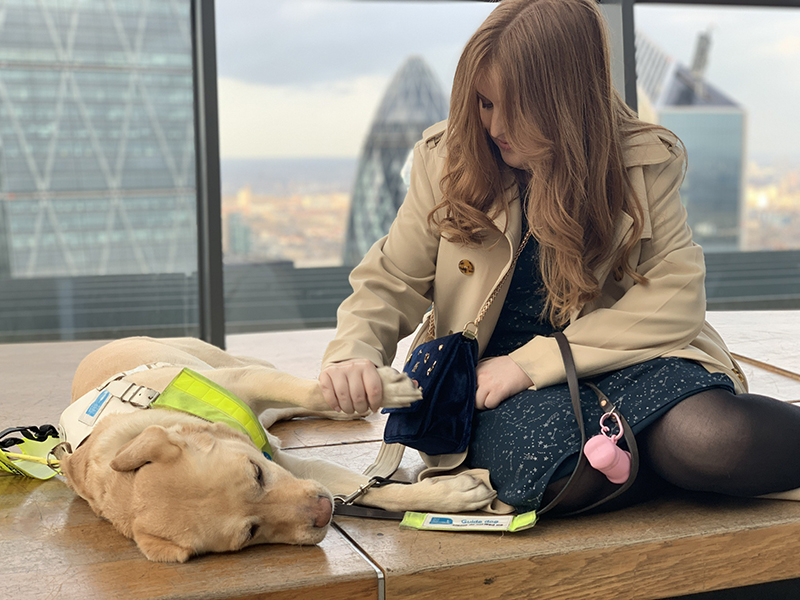
As a disabled influencer, one of the most important things a brand can do is to include us. Represent us, work with us and normalise us.
Brands are certainly getting better when it comes to representing diversity, disability included. Many influencers, such as Jordan Bone and Molly Burke, have worked with affluent beauty brands including Dove and L’Oreal.
Benefit recently signed Kate Grant, a model with Down’s Syndrome, to appear in its campaigns. Slowly we are seeing more disabled models like Kelly Knox at fashion week.
I myself as an influencer have had the opportunity to work with brands, such as Being by Sanctuary and Superdrug, on their brand campaigns. I also often get to work with brands on new releases. Its a wonderful feeling to be included and to represent the disability community.
But, that doesn’t mean to say that all brands are doing enough to represent us in their campaigns. Represent us in your adverts, work with disabled influencers in your online campaigns and show that you believe disability inclusion matters.
Don’t just showcase us once every so often, we deserve to be an integral part of your advertorial demographical all the time.
By Emily Davison
More on Disability Horizons…